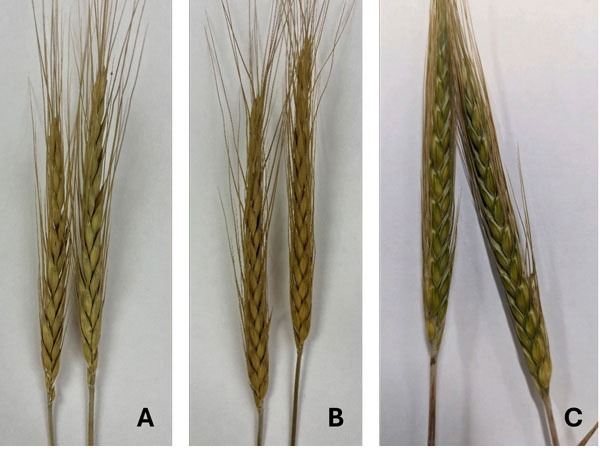Kansas Crop Improvement Association reports wild hybrid in wheat fields
‘Mystery Plant’ shows up in three locations, but is not a big concern
At a glance: An official with the Kansas Crop Improvement Association says a wild triticale hybrid found recently in wheat fields “wasn’t intentionally crossed,” but also is not currently a big concern.
More information: Marion Spiering, 785-532-6118, mskcia@kansas.net
Related: Kansas Crop Improvement Association
Nov. 14, 2024
By Pat Melgares, K-State Research and Extension news service
MANHATTAN, Kan. – An official with the Kansas Crop Improvement Association encourages the state’s farmers to look for signs of a wild triticale hybrid found recently in wheat fields.
Marion Spiering, the manager of field services and seed certification for KCIA, said the wheat and triticale hybrid “wasn’t intentionally crossed.”
“We found it in three locations this summer and it was a mystery plant,” Spiering said. “We didn’t know what it was, so I embarked on a quest to figure out what we were finding.”
Listen to an interview by Shelby Varner with Marion Spiering on the weekday radioi program, Agriculture Today
 The unknown plant was easy to spot, Spiering said. “It stands above the canopy, so looking across the field, it’s pretty easy to spot if you get down to the level of the wheat canopy,” she said.
The unknown plant was easy to spot, Spiering said. “It stands above the canopy, so looking across the field, it’s pretty easy to spot if you get down to the level of the wheat canopy,” she said.
At right: Dried spike samples of the wild hybrid found in Dickinson County (A), Marion County (B) and south central Kansas (C). (Image courtesy of the Kansas Crop Improvement Association)
As the official seed and plant-part certifying agency in Kansas, the Kansas Crop Improvement Association routinely inspects fields in the state as part of its quality control system. As producers prepared for inspections this year, some of them spotted the wild hybrid; Spiering said there were reports in south central Kansas, as well as Dickinson and Marion counties.
“At first glance, these farmers probably thought it was rye or triticale,” Spiering said. “But as they got closer to it and looked at the head, they realized it was neither. It was something new.”
Genetic testing confirmed the wheat x triticale hybrid, which Spiering said surprised her: “Triticale already is a cross between wheat and rye, so I honestly didn’t know that a hybrid could hybridize again with wheat,” she said.
The hybrid looks like a wheat head, but more narrow and flat than wheat should be. “I think anybody familiar with what a wheat head, rye head and triticale head looks like would be able to pick it out in their field, and know that it doesn’t neatly fit into any of those categories,” Spiering said.
The hybrid doesn’t have a lot of seed fill – only about three seeds per plant, according to Spiering – so it is not a concern for wheat production in Kansas. But germination tests conducted by the KCIA seed laboratory showed that the seeds that it does produce are 60% viable, meaning there is a slight possibility that the wild hybrid could negatively impact wheat production in the future.
Spiering encourages wheat producers to notify the KCIA if they discover the hybrid in their fields. She said that the organization benefits from having data on the hybrid, and can potentially help confirm that it is, indeed, the suspect hybrid.
In the short term, she said wheat growers who wish to get rid of the suspect hybrid can simply grab a handful – and pull.
“I want folks to know that this isn’t a big concern in Kansas right now,” Spiering said. “Seed certification is dedicated to a traceability system; all of the growers in our state have their fields inspected and they rogue their fields, so it’s not a concern. Seed certification is a great system to keep this under control.”
More information on the Kansas Crop Improvement Association is available online at https://www.kscrop.org.
***

K‑State Research and Extension is a short name for the Kansas State University Agricultural Experiment Station and Cooperative Extension Service, a program designed to generate and distribute useful knowledge for the well‑being of Kansans. Supported by county, state, federal and private funds, the program has county extension offices, experiment fields, area extension offices and regional research centers statewide. Its headquarters is on the K‑State campus in Manhattan. For more information, visit www.ksre.ksu.edu. K-State Research and Extension is an equal opportunity provider and employer.